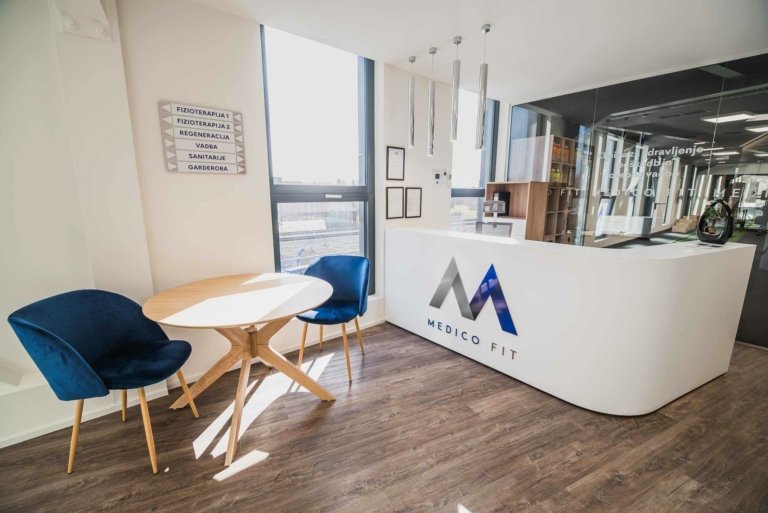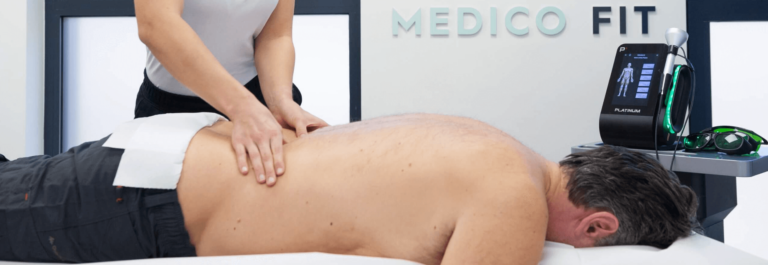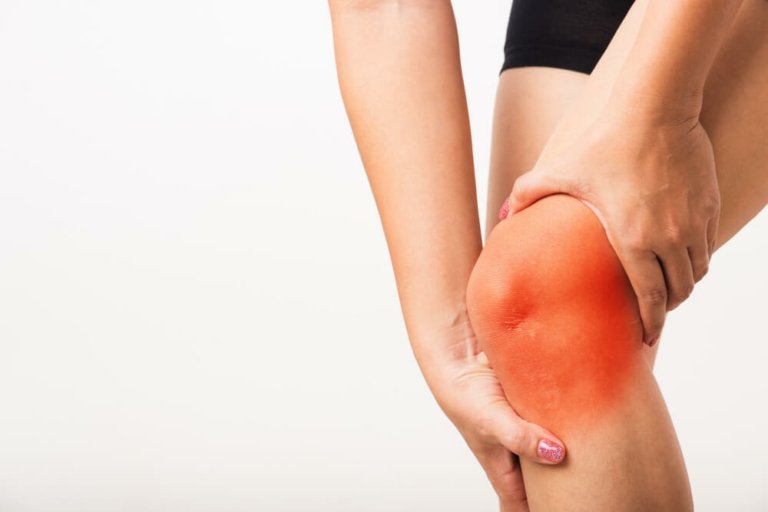Chronic heel pain can be a serious limitation of movement and consequently cause a drop in the quality of your lifestyle. Heel pain can be caused by various conditions, e.g. overloading of the foot due to running or long-term walking, heel spur, inflammation of the growth of the Achilles tendon, flat feet, fracture of the heel or heel strike. In this article, we will give you a detailed presentation of the thorn in the side or heel spur, which often causes pain in the heel area, affecting 35 % of people over the age of 60, with an overall prevalence of 15 %. Heel spur a condition that is treated operatively in only 5 – 10 % of patients, when treatment with physiotherapy and kinesiology is not effective.
Did you know that heel spurs can be successfully treated with physiotherapy in 90 % of cases?
You probably didn’t know that a heel spur can be more than 1 cm long and is almost always caused by plantar fasciitis or inflammation of the connective tissue of the arch of the foot and inflammation of the Achilles tendon or tendinitis of the Achilis tendon through the mechanism of excessive tension of the growth of the plantar fascia or growths of the Achilles tendon.
Heel spur develops more often in women, especially when it is bilateral or bilaterally, wearing high heels is a proven risk factor for the development of heel spurs, and individuals with increased body weight and top athletes in high-impact sports, where there is a large amount of jumping, are also at greater risk. Inadequate foot mechanics such as flat feet, is also a risk factor for heel spurs.
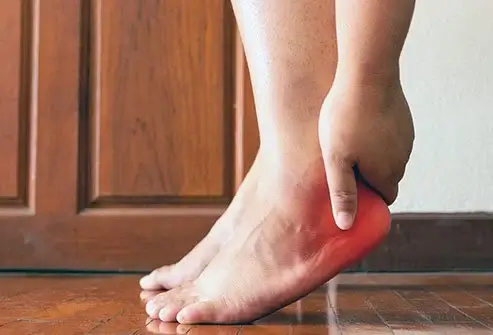
A heel spur is an osteophyte or bone growth caused by deposition or accumulation of calcium in the area of the heel bone (calcaneus), and it can take different forms, namely pointed, hooked or shelf-like. A heel spur can form in the area of the growth of the Achilles tendon, on the back of the heel and grow upwards (Dorsal heel spur also known as Haglund’s heel – spina calcanei superior) or in the area of the growth of the plantar gascia, on the underside of the heel and grow straight towards the foot bow (Plantar heel spur – spina calcanei inferior).
A heel spur is also called calcification of the heel, it is diagnosed by X-ray imaging, it can be present in the form of calcification or already formed bone, in which case we speak of an osteophyte.

How is a heel spur formed?
A heel spur is caused by long-term increased tension caused by excessive stretching of the plantar fascia, which causes the accumulation of calcium and point bone formation, which then further irritates the plantar fascia and pain receptors in the heel area.
The heel spur that forms on the back of the heel is caused by long-term increased tension caused by excessive stretching of the Achilles tendon in the area of its growth, and the resulting bony formations increase the already present pain and the intensity of the inflammation.
What is plantar fasciitis?
The entire lower area of the foot is covered by a connective tissue, which is professionally called the plantar fascia, and it runs from the heel, through the arch of the foot to the toes. The role of the plantar fascia is to transmit force through the foot during walking and pushing off and to ensure the shape of the longitudinal arch of the foot. The plantar fascia is exposed to heavy loads as it carries the entire body weight during walking and other sport activities.
Recent studies define the plantar fascia actually as an aponeurosis (muscle-bone connection) and not as fascial tissue, due to the active role it plays in foot mechanics. The plantar fascia consists of longitudinal collagen fibers and is divided into medial, central and lateral components.
Plantar fascilitis is a condition of inflammation or irritated plantar fascia due to overload or degenerative changes that occue with age. Plantar fascilitis can also be indirectly caused by weak foot muscles and muscular asymmetries of the shin musculature. When the foot does not take the correct position during running and walking, e.g. is excessively pronated (turned inwards), supinated (turned outwards) or is a general flat foot, these is a pronounced risk factor for the occurence of plantar fascilitis.
It is interesting that the heel spur itself does not cause pain in isolation, it is mainly caused by inflammation of the plantar fascia or the Achilles tendon in its vicinity on condition of plantar fascilitis or inflammation of the Achilles tendon, which then becomes an additional intensifier of symptoms and further worsens the chronic condition that caused it.
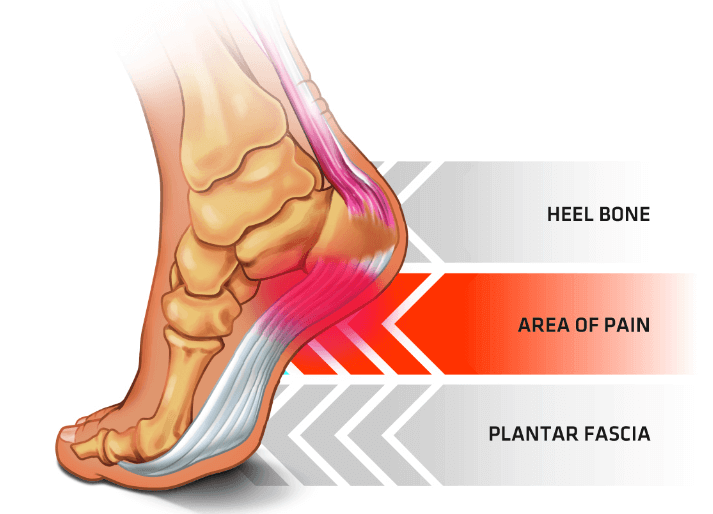
What are pains caused by a heel spur?
Thorns in the heel are characterized by morning pain, as the plantar fascia shortens and expands during sleep, and in the morning, when taking the first steps, it is loaded with the full weight of the body. The plantar fascia is under stress due to tensile forces with every step, so in symptomatic heel spurs, every step can cause unpleasant pain, which typically improves with mild activity.
A heel spur is characterized by a sharp, stabbing pain the morning when taking the first steps, the form of the pain also depends on the size and location of the bone growth and, above all, on which nerve receptors are stimulated. The sharp morning pain usually subsides after only a short distance walked, but a long-term chronic unpleasant pain remains. It is typical for heel spurs that increased physical activity can lead to worsening of the condition and more severe pain during the day.
Did you know that a heel spur can also be asymptomatic and completely painless?
A heel spur is discovered by chance in many individuals as it can be asymptomatic, various studies find that between 40 – 65 % of heel thorns are asymptomatic and therefore do not cause any pain.
When a heel spur is symptomatic
A heel spur needs to be treated with special physiotherapy because even in the case of an asymptomatic condition, it can progress and start to cause symptoms of varying intensity. In the worst cases, a heel spur can hinder walking and most sport activities, and the pain can radiate to the entire foot. The heel spur has a characteristic post-static pain, so it can be quickly distinguished from other pathologies that cause pain in the area of the heel. Post-static paleness means that after rest or after the first few steps of inactivity, a sharp pain occurs in the heel.
Pain caused by a heel spur can last for several years and in rare cases requires operative treatment, especially in patients who did not start treatment with physiotherapy and kinesiology in time.
Does the heel spur appear on one or both heels?
The heel spur hurts mostly on one side, however in 2/3 of patients it is also asymptomatically present on the other leg, they usually say that they have had occasional problems with the other heel in the past.
Treatment of a heel spur, how do we eliminate it?
The treatment of heel spurs, regardless of the phase and duration, requires an integrated physiotherapeutic approach, which for the physiotherapists at the Medicofit clinic means the simultaneous use of manual therapy, instrumental therapy and special exercise therapy, t.e. kinesiotherapy.
A common mistake in the treatment of heel spurs is the isolated use of only one therapeutic technique, e.g. deep shock waves, which are an effective method of treatment for all types of heel spurs, but only when used in combination with kinesiological exercises, manual therapy and other instrumentar techniques, e.g. TECAR therapy and LASER therapy.
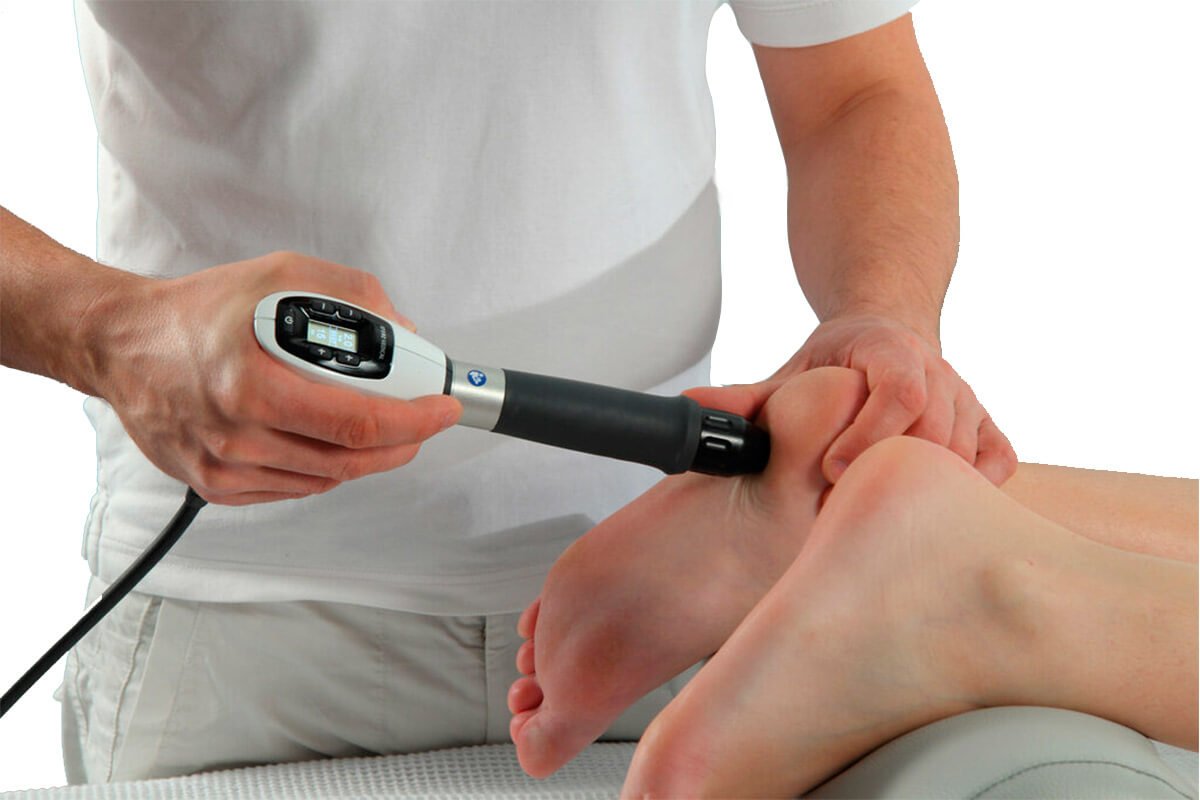
Depth shock waves (ESWT)
Shock depth waves are present in 80 – 90 % of patients with a diagnosis of heel spur with immediate pain-relieving and anti-inflammatory effect and represent the most effective non-operative techniques for the treatment of heel thorn as long as they are performed in combination with proper kinesiological exercise and manual therapy.
Deep shock waves are divided into mechanical and sound (acoustic) and they work through the mechanism of mechanical force transfer to local tissue, which causes increased blood flow and the flow of micronutrients at the site of injury. At the Medicofit clinic, we use deep chock waves as a leading technique for the treatment of heel spurs with the aim of reducing the size of the bony growth.
The depth shock wave causes the deposited calcium to ‘break’ into smaller crystals, which are then broken down and absorbed in the surrounding tissue.
In practice, depth shock waves are often used incorrectly in the treatment of heel spurs, as they are only applied directly to the area of the heel spur. Since the heel spur is usually accompanied by inflammation of the surrounding connective tissue, depth shock waves must also be used at the site of the inflamed plantar fascia or growths of the Achilles tendon for the healing of inflammation and microdamages of the connective tissue.
Manual therapy
In the case of a heel spur, manual therapy addresses the surrounding connective tissue, which is always the cause of pain or symptoms. With manual techniques, the physiotherapist massages the plantar fascia and with various variations of techniques mobilizes the shortened plantar fascia and accelerates blood circulation and healing of degenerated collagen fibers. Manual techniques are an important tool of a holistic approach in the treatment of heel spurs, and are often performed in combination with TECAR therapy.
Tecar therapy
Another one of the instrumental techniques of the holistic approach in the treatment of heel spur is TECAR therapy, which increases the temperature of the tissue and increases the energy potential of the cell membranes. Tecar therapy is a non invasive physiotherapy technique that is performed in the early acute phase, when the torn in the heel is painfully stimulated.
Kinesiological exercise
Since heel spurs are an overload condition, it is crucial to be aware that in the acute phase the load-bearing capacity of the arch of the foot and the area of the heel will be very low, which means that we will have to gradually restore it. At the Medicofit clinic, we perform active physiotherapy, which is why we perform adapted exercises early in the painful phase of the plantar fascia, thereby accelerating the formation of new collagen structures and the healing of damaged fibers.
In the context of kinesiology training, it is a matter of great individualization, as individuals who treat heel spurs have different goals regarding sports activities. If we have a topp athlete or a recreational athlete who will run and jump, we must perform progressive strength and endurance training and prepare the patient for running loads. At the Medicofit clinic, we also perform plyometric rehabilitation, which means that after the heel spur has healed, we establish the correct technique of running, jumping and landing.
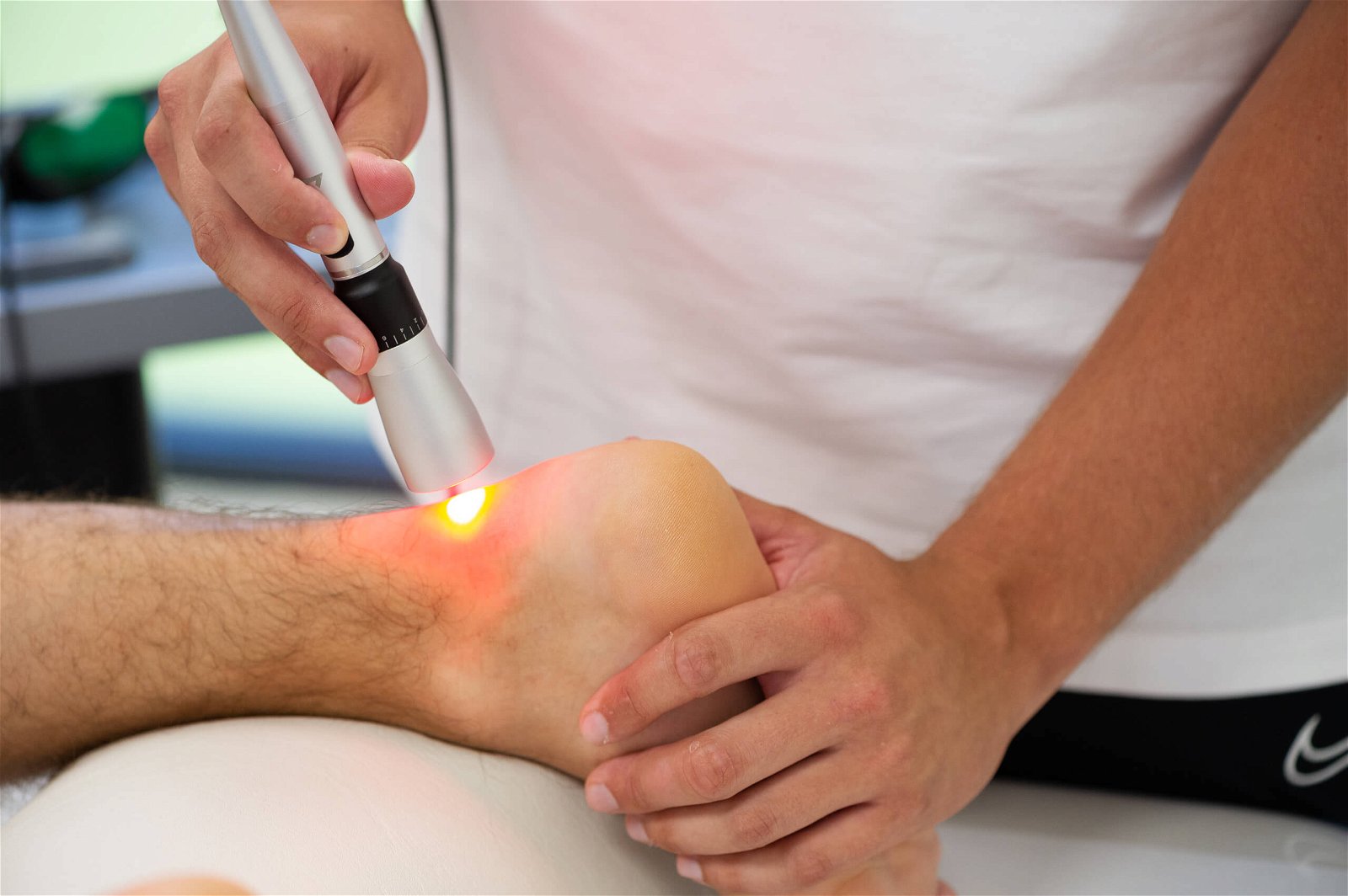
Regardless of the level of sports activity, for the long-term successful treatment of heel spurs, it is necessary to strengthen the area where the plantar fascia and Achilles tendon attach to the heel.
How can you help yourself?
We have presented you with the holistic treatment of heel spurs, and now we present you with some self-help measures that you can carry our on your own until the start of your rehabilitation.
First of all, avoid plyometric sports activities, i.e. running and jumping, wear footwear that has padding or padded heel, as this reduces direct pressure on the heel area, the heel should be padded by at least 1.5 cm but no more than 4.5 cm. We also recommend the manufacture of a custom – made orthopedic insole.
At home, you can perform a mild cross-frictional massage of the plantar fascia and the area of growth on the heel, avoid aggressive stretching exercises, and above all, we advise you to start with a holistic treatment of the heel spur, which should include physiotherapy and kinesiology.
When is heel spur surgery necessary?
Operative treatment of heel spurs is rare and is performed only in 5-10 % of patients, especially when conservative treatment with physiotherapy and kinesiology has not been successful in reducing heel spurs and pain.
At the Medicofit clinic, in cooperation with orthopaedic specialists, we advise at least 16 weeks of structured physiotherapy and kinesiology before suggesting operative treatment of heel spurs. In the event that the heel spur is present for more than a year, physiotherapy treatment can last up to 24 weeks. The first effect of the therapies should be noticeable already within the first three weeks of treatment with rapid signs of improvement in the second half of the treatment, usually after 8 weeks.
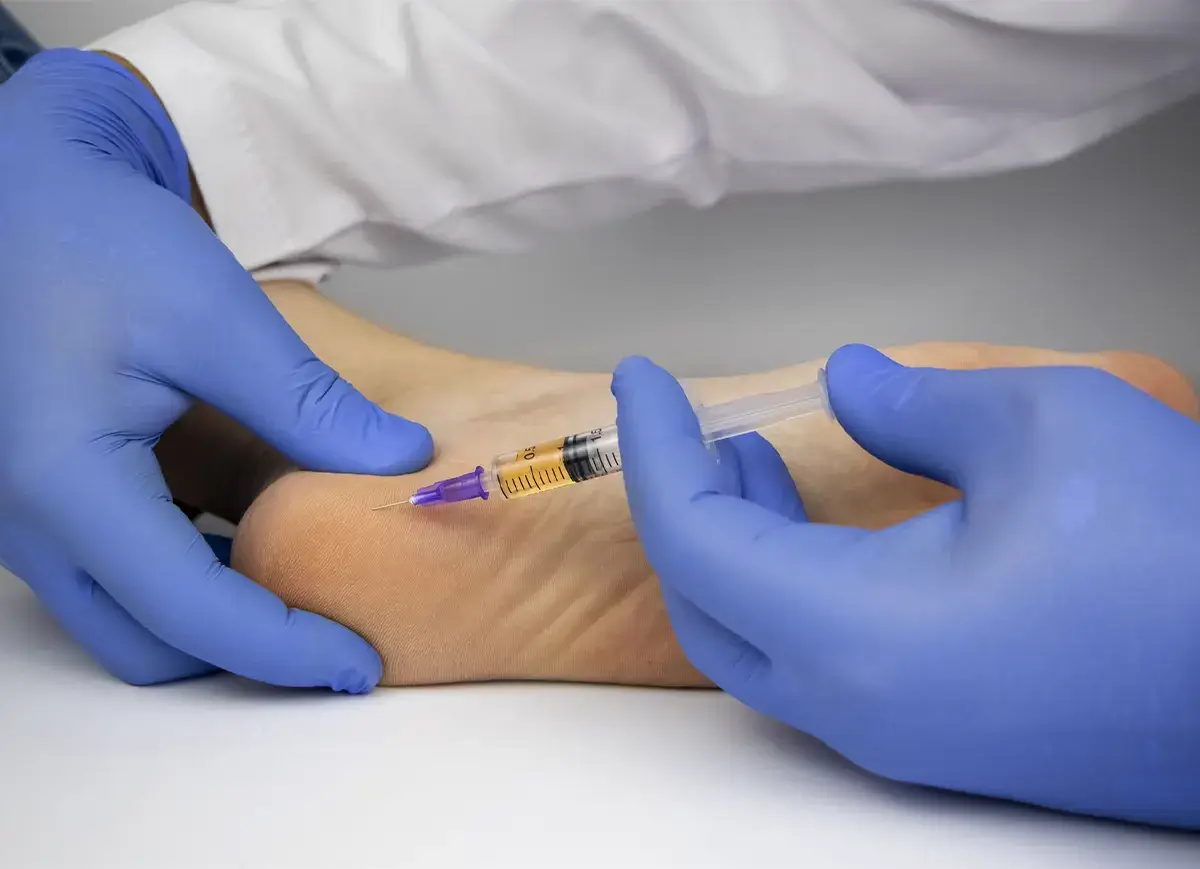
The generally accepted norm among orthopaedic specialists is to suggest surgical removal of the heel spur when the symptoms do not resolve within 9 – 12 months of physiotherapy or conservative treatment. Surgical techniques may also include releasing the plantar fascia.
At the Medicofit clinic we are specialists in the treatment of orthopedic conditions, heel pain is a condition that we treat with an integrated manual, instrumental and exercise approach. It is important for us to treat each heel spur individually and to adapt the treatment technique to the different variations of symptoms and forms of the heel thorn.
Common questions related to heelp spurs
What can you do as part of prevention yourself to prevent a heel spur?
- Avoid wearing high heels, especially when sitting. Regularly perform exercises to tone the shin muscles and exercises to strengthen the muscles of the foot arch. We recommend that you perform single-leg exercises and include balance exercises as part of your fitness routine, and do both types of exercises barefoot.
When is a heel spur operation necessary?
- Thorns in the heel are generally not removed, surgical interventions are performed only on the surrounding soft tissues. Operative treatment is rarely indicated, especially in cases where long-term treatment in the form of physiotherapy and kinesiology did not eliminate the pain and heel spur. Operative treatment is performed only in 5 – 10 % of cases of heel spurs, as a rule, not before comprehensive conservative treatment has lasted at least 9 months.
What patients who have a heel spur must know?
- As a rule, conservative treatment is long-term, the timeline of physiotherapy is one of the longest among pathologies of the lower limbs. Patients should be aware that heel spur treatment usually takes several months, usually at least 16 weeks.
What kind of physiotherapy should patients with heel spurs choose?
- The first rule when deciding on heel thorn physiotherapy is Focused Schock Depth Waves, without which heel thorn cannot be treated as a rule. Another rule is active physiotherapy, the specialist who leads the treatment of the condition of heel spurs must be well versed in exercise techniques, which he must progressively include in the rehabilitation program.
At the Medicofit clinic, we recommend surgery only when structured rehabilitation with all the described techniques of an integrated approach has not been successful. If the patient only performed deep shock waves in isolation, which is unfortunately a common practice, or only manual therapy, then we definitely do not recommend surgical treatment, as he did not perform an optimal overall conservative approach. If severe acute pain in present during the physiotherapy treatment, a local anaesthetic can be injected or a corticosteroid to reduce pain.






